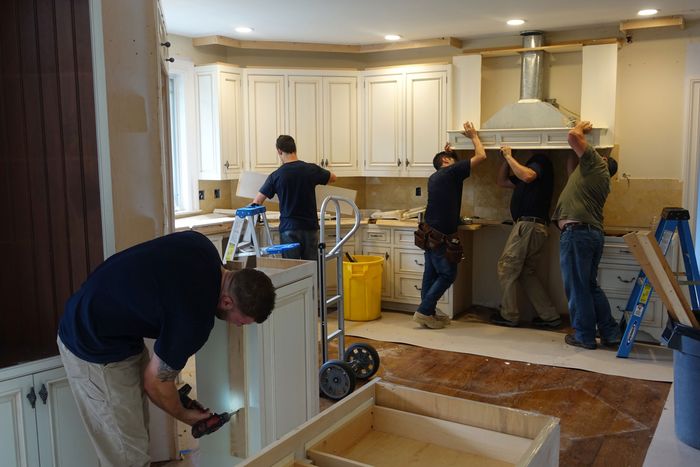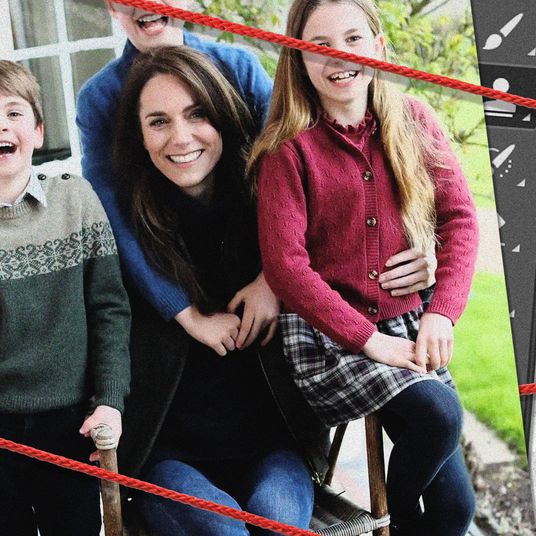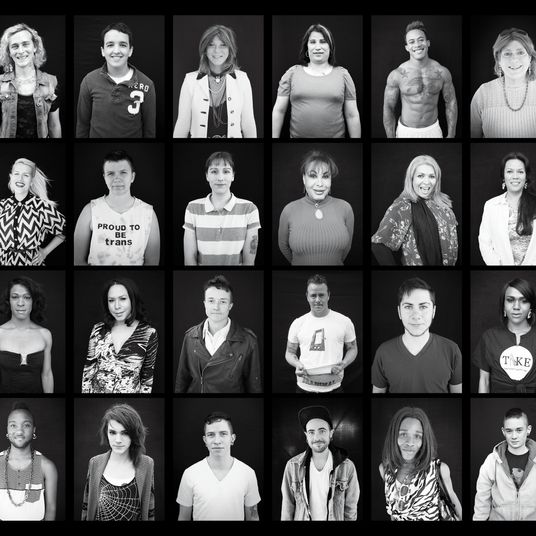This article was featured in One Great Story, New York’s reading recommendation newsletter. Sign up here to get it nightly.
Nothing sours you on consumerism like moving. Especially when you’re moving out of a home you’ve occupied for 20 years to a new place half the size.
On our way to becoming empty-nesters this fall, my wife and I had accumulated a mountain of material goods. I mean, so. Much. Crap. We faced down closets full of kid stuff (toys, bikes, sports, instruments, costumes, books), superfluous house junk (furniture, rugs, bedclothes, garage crud), and, of course, all our own crap: the amassed clothing, equipment, and stacked attic relics of our time on earth so far.
I’m not a hoarder; I’m really not. I’ve just been a little busy for the past 20 years.
As the sale of our house approached, I could see two quick ways out.
Option 1: Haul everything to Goodwill, Salvation Army, or Habitat for Humanity. Unfortunately, these places reject all kinds of stuff, including mattresses and bedding, toys, cribs, strollers, and anything that needs fixing. And 15 percent of what Goodwill does accept winds up in the landfill anyway.
Option 2: Dump it all into the massive hydraulic maw of the Transfer Station, run by our town’s sanitation department. It’s a 15-by-20-foot steel trash compactor set into a concrete floor; it looks like a swimming pool of death. You pull up in your car, heave your unwanted stuff into the stinky metal abyss, and go home. Every year, 44 million Americans move; by one estimate, each move involves ditching an average of 1,120 pounds of household crap. Our purge—six people, big house, 20 years—would have been far worse.
I couldn’t deal with that; for both aesthetic and ethical reasons, I didn’t want to be part of the problem. I needed an Option 3. I wanted to engineer a landfill-free move.
That notion wound up becoming a six-month obsession — and opening my eyes to just how huge and friendly the secondhand economy has become.
The kitchen
We began prepping the house for sale a couple of years ago. For starters, the real-estate agent told us, the kitchen would have to go. It was outdated, it was cracked, it was beige. It had “landfill” written all over it.
But here’s a cool story: In 2001, a radio executive and recovering addict named Steve Feldman was driving through Greenwich, Connecticut, when he spotted the demolition of a 10,000-square-foot mansion in progress. He watched, aghast, as workers threw load after load of custom kitchen cabinetry, fine-marble countertops, and high-end appliances into dumpsters.
Surely, he thought, there was a market for this stuff.
There was. The company he founded shortly thereafter, Renovation Angel, has now rescued 8,100 upscale kitchens, according to its website.
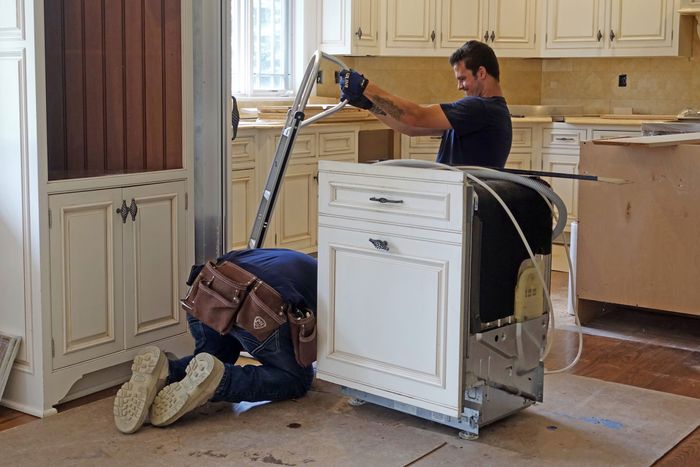
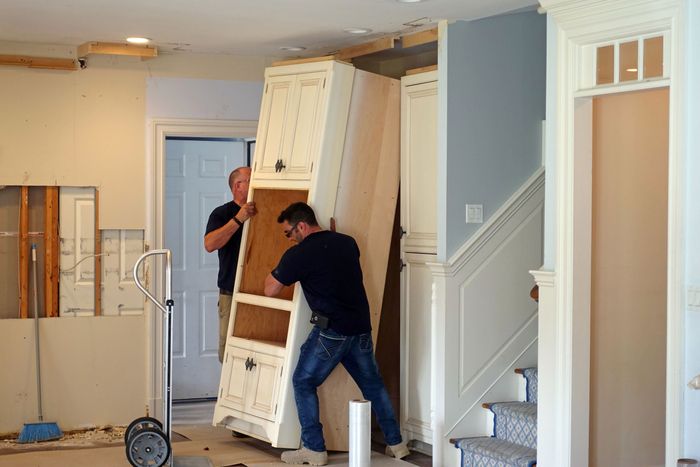
Here is its business model. (Caution: May sound insane.) When you want to renovate your kitchen, Renovation Angel sends an insured, background-checked demolition crew to rip it off the walls. Of course, demolition and rip aren’t quite the right words; what they actually do is carefully unscrew, pry, remove, and protect your cabinets, counters, and appliances, piece by piece. Then they load it all onto a truck and drive it to New Jersey.
At this point, they stage your former kitchen in a 43,000-foot showroom. It’s as weird as it sounds: an immense store selling entire kitchens, arrayed like stage sets with price tags.
People who are renovating their kitchens can now buy yours for 10 or 20 percent of its original cost. (How can someone buy a kitchen from a totally different house and expect it to fit their kitchen space? “Kitchens are modular,” Feldman says. “They use a few less cabinets. They rearrange them differently. They get different granite. But at the end of the day, they’re saving tens of thousands of dollars.”
And this may be the best part: The whole thing is a nonprofit. Feldman donates the proceeds to addiction-recovery programs like the one he credits with saving his life.
We went for it. It worked. We saved $5,000 on the demolition and hauling. We got a receipt for a whopping tax deduction. Some lucky family out there got their new (beige) kitchen for a song. More money funded more social programs.
And the landfill never saw a splinter of it.
The bathrooms
Like the suburban home-selling clichés we had become, my wife and I also updated two of our bathrooms before putting the place on the market. That meant we had sinks, toilets, cabinets, and a big bathtub potentially headed to the landfill. At the time, Renovation Angel had no interest in that stuff; they just did kitchens. Habitat for Humanity declined us too; they said they accept only appliances under ten years old — and no used faucets or toilets.
Fortunately, my Google sleuthing unearthed Second Chance. This outfit doesn’t do the demolition for you, but they do send a crew to collect the pieces. This time, the chunks of your former décor wind up in a store in Baltimore. Once again, you get a donation receipt for tax purposes. And once again, it’s a nonprofit with a larger social purpose: It trains and employs people with “various employment obstacles.”
All we had to do was stand out of the way as their crew carried off the dismembered guts of our old bathrooms to their bright new future in Baltimore. Including the toilets. Take that, Habitat!
We were two for two. I started feeling the altruist’s high.
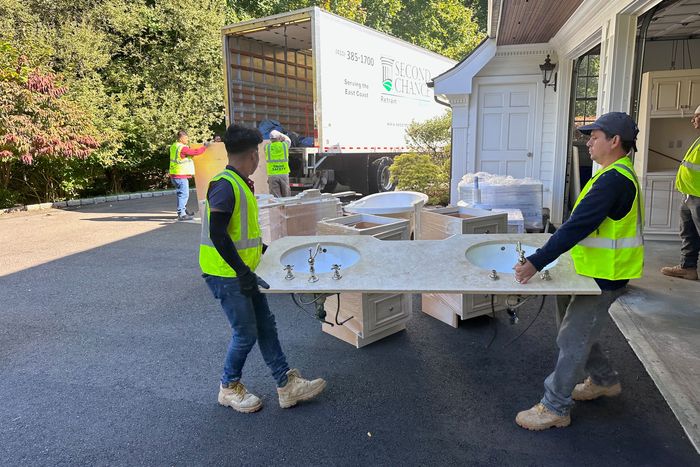
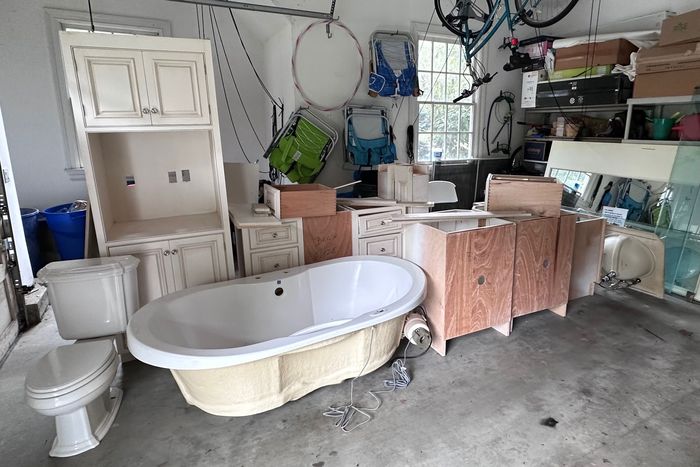
The free garage sale
But what about everything else? What about all the old sleds, puzzles, umbrellas, baskets, frames, towels, knickknacks, bedding, toys, and gadgets?
My wife, Nicki, was generally supportive of my reduce-reuse-recycle doctrine. But she also had a philosophy of her own: that if I attempted to sell each thing individually — on eBay, for example — I’d drown in a time-suck vortex.
What I had here was a one-to-many problem. I didn’t have the bandwidth to market and ship individual pieces of household junk one transaction at a time. What I needed was a many-to-one solution. I wanted the public to come en masse, at one appointed time and place, to survey all my attractively arrayed crap.
That’s how I came up with the Everything-Free Garage Sale.
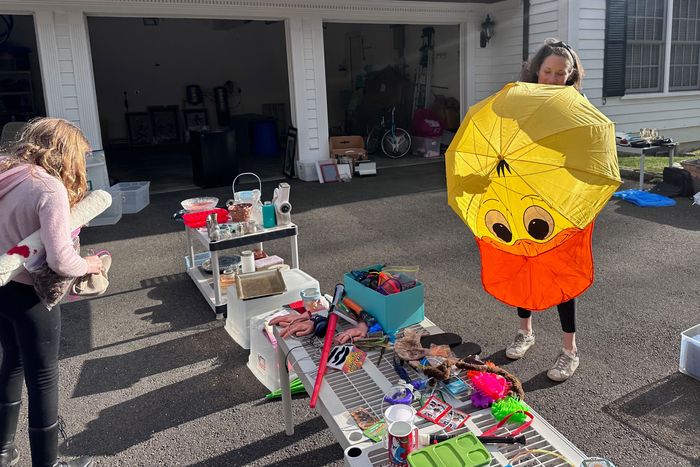
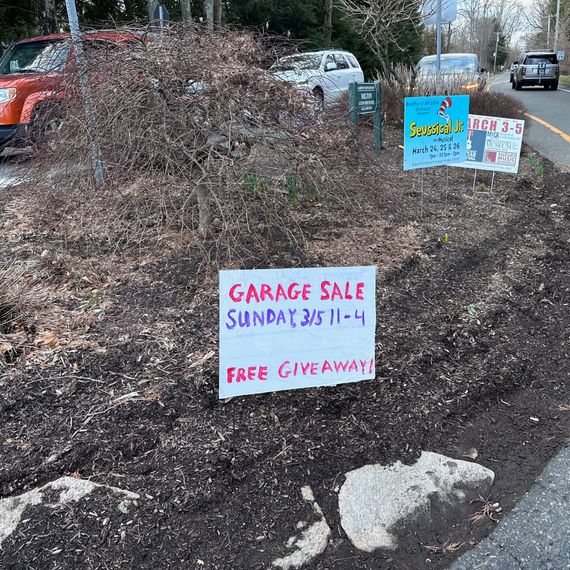
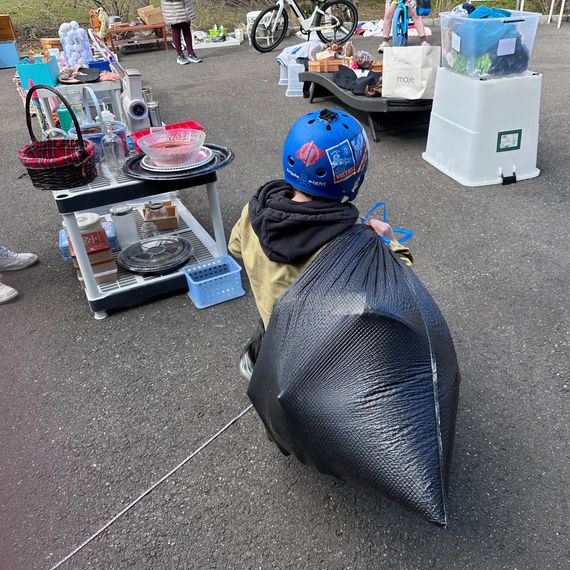
It looked exactly like a regular garage sale — long tables exhibiting one man’s trash — but without price tags. The goal wasn’t making money; it was finding new owners for as much detritus as possible as fast as possible.
I had no idea how well this would work. On one hand, I was encouraged by studies that illustrate the profound effect the word free has on people. It triggers a powerful emotional response that blows your sense of value to smithereens. (Of course you’re not getting anything free in a “Buy one, get one free” deal. They’re still making money off you. But try telling that to your reptile shopping brain.)
According to this theory, the “FREE” descriptor of my garage sale should have driven droves of shoppers to my driveway.
On the other hand, research has also solidly established the price-quality heuristic. That’s when we unconsciously assume that if something is more expensive, it must have better quality. (I mean, if you don’t know much about wine, what else do you have to go on, am I right? Pricier must mean better.)
According to this theory, my low, low prices ($0) might suggest to potential shoppers that everything I had to offer was worthless junk.
So which scientific principle would prevail?
In the end, it was mostly a bust. Not many people showed up — and those who did seemed to miss the “FREE” part entirely. Over and over, someone would pick something up and ask, “How much is this?”
When I explained that everything was free for the taking, I expected huge smiles of delight. But almost without exception, I got Skeptic Face. They distrusted the whole premise of my brilliant innovation. Their gut reaction seemed to be, What’s wrong with this stuff?
Bottom line: The unappreciative respondents to my Free Garage Sale did not exactly clean us out. Unless I could find a better approach, there would be no landfill-free move.
The Marketplace
As Putting The House On The Market Day approached, my anxiety mounted. Surely, somewhere on life’s great matrix of time, effort, and money, there existed a better way to move these goods along to their next owners.
There was: Facebook Marketplace.
Yeah, I know. Facebook is a dumpster fire, Facebook is for losers, etc. But Marketplace is a parallel-universe Facebook in which the usual posting features are supplemented by special tools for listing, tracking, and selling stuff. And here’s the beauty of it: You’re buying and selling stuff locally. No packing, no shipping. People just come by.
(If you’ve used Marketplace, this explanation likely strikes you as eye-rollingly self-evident. Once you’ve started using it, it’s no more remarkable a tool than, say, Google or Wikipedia. But I — yes, a grizzled tech journalist — had never tried it, despite its having bubbled along for years, 24/7, right under my nose.)
Over the course of what eventually totaled 175 Marketplace sales, I got the posting process down to a science. Take a couple of photos with the phone. Click New Listing. Write a description. (I never wrote that a laptop case, throw rug, or wicker chair had scratches or stains; I said that it was “battle-scarred but proud.”)
Pick a price, indicate what nearby cities you want to see your ad, click Post, and wait for the hordes to respond in the comments.
Nicki kept predicting, “that thing’s not gonna sell.” But incredibly, that never did happen. We never did list something that nobody wanted.
There are dimwitted scammers, but they’re easy to spot. After that, your biggest problem is deciding who the lucky winner is going to be. Should you award your item to the first person to express interest? To the person who seems to need it the most? To the person who’s been on Facebook a while, on the premise that they’ll be less likely to be a no-show?
I used a spreadsheet to track each item’s movement through the process, with columns like Item, Buyer Contacted, Pickup Date, and Complete so I could remember whose court each ball was in.
Once the machinery was in motion, though, I loved my months moving merch on Marketplace. Remember, the buyers come to you. You meet them. And for some reason that science hasn’t studied, almost everybody arrives warm and talky. Maybe it’s because we each think we’re getting the better deal; maybe it’s just fun when two people are brought together who otherwise never would have met. What’s for sure is that everybody’s just delighted at the whole transaction, and some unforgettable conversations result.
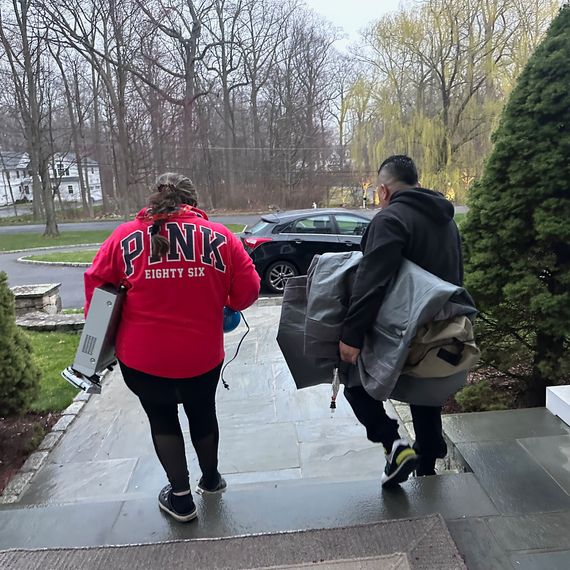
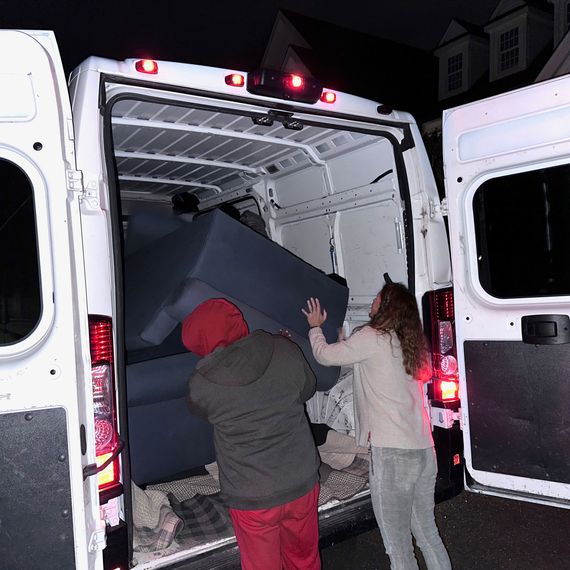
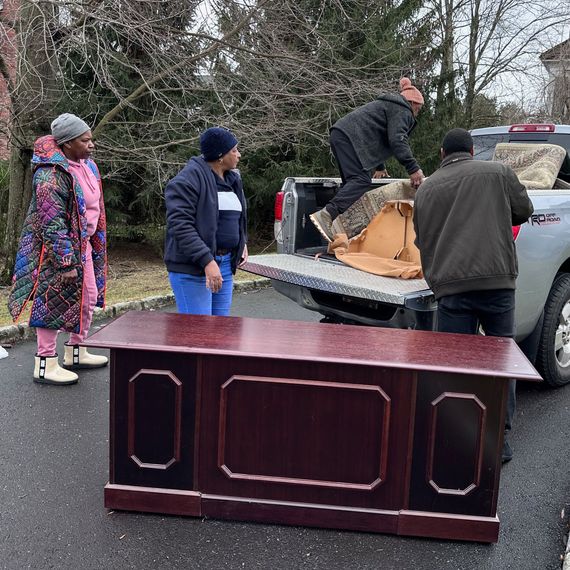
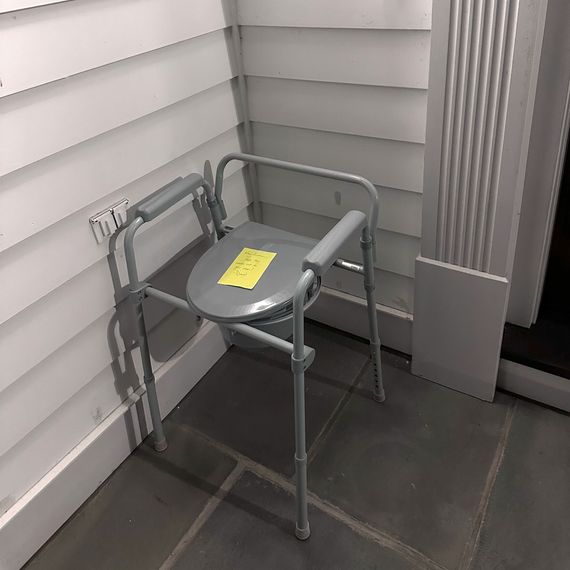
One woman came to pick up a huge box of promotional T-shirts that I’d accumulated during my years as a tech writer. And what, I asked, could she possibly want with 90 T-shirts bearing the logos of now-defunct start-ups?
She collects clothing, blankets, and towels all year long. Then, twice a year, she flies it all back to her hometown in Haiti and gives it away. On her phone, she showed me a video of the local kids thronging around her to see what she’d brought on her last visit.
A 40-year-old guy came to pick up, I kid you not, a set of Tae Kwon Do belts (white, yellow, green …) from my son’s long-abandoned martial-arts phase. (This item had been high on Nicki’s “Nobody’s going to want that” list, but this man really wanted them. He hoped that they’d inspire his own two boys.)
He began to describe his life’s arc: Grew up in Peru. Came to the U.S. as a teenager. Got into trouble, committed a felony, did time, then got clean and built a family and a gutter business.
But his mother never forgave him for what he did wrong. To this day, she refuses even to speak to her grandchildren. And as he got to this part of the story, he began to cry right there in the kitchen, clutching these old fabric belts. I just stood there trying to process what was happening and did my best to be a good listener. (The next day, he messaged me: “Check your mailbox.” He’d left us a bottle of wine.)
Another guy came to pick up a dining-room hutch. But when it turned out to be the wrong size for his space, he didn’t just head out; the Marketplace Effect is too strong for that. Instead, we hung out for over an hour. When he learned that I’m a writer, he lit up — his 16-year-old son is an aspiring fantasy author! Maybe I could read one of his stories and give him some advice?
Well, why not? Turns out the kid is talented. We exchanged a few emails. Last month, he wrote to let me know that his first story has been accepted for publication.
Now, a word about mattresses: In many states, selling mattresses and box springs is restricted or illegal. As a result, thousands upon thousands of them go straight to the landfill, which makes me crazy. (My exhaustive research — two links on the first page of Google results — suggests two explanations for the “no mattress resale” laws. Theory A: Well-meaning state legislators wanted to minimize the spread of bedbugs and mites. Theory B: Craven state legislators have bent to the will of Big Mattress.)
Fortunately, Facebook Marketplace hosts a flourishing underground economy for bedding. So when it came time to pass on a twin-bed mattress that wasn’t in great shape, I listed it (free).
Incredibly, even that old mattress had a taker: A woman who’d just left a domestic-abuse shelter. To help with her transition to a life on her own, the city had set her up with her own apartment — unfurnished. A mattress like this was just what she needed.
Beyond Marketplace
As my hobby grew, I came to realize the immensity and vibrance of the secondhand economy. For example, Buy Nothing communities have sprouted up all over the country. It’s a little like Facebook Marketplace, except that everything is free. I routinely see beautiful couches, unopened electronics, unworn clothing, and an infinite supply of un-Goodwillable toys, strollers, and bassinets.
If you live in one of the 15 lucky states where Pickup Please operates, you don’t even have to carry anything. They come to you, by appointment, to relieve you of used clothing, electronics, books, small furniture and appliances, fitness gear, and toys (yes, toys). On the East Coast, Planet Aid performs a similar service with an emphasis on clothes, shoes, linens, and towels.
In our new town, we have a Take It Or Leave It booth at the Metro-North station. Every Saturday, people drop off stuff and take away stuff, making the TIOLI concept a cross between a flea market and Dave’s Everything-Free Garage Sale.
After the great declutter
So how did I do? I regret to inform the planet that I did not, in the end, engineer a flawless, landfill-free move. We wound up with 11 trash cans’ worth of stuff I couldn’t find a new home for.
But for the house’s worth of possessions that I did redirect into the stream of usefulness, I feel great. For two reasons: First, obviously, I took pride in the gesture. Just this once, I knew I wasn’t part of the problem.
Second, there’s the donation effect: The well-studied principle that giving something away lights up the pleasure centers in your brain and lowers your blood pressure.
You get a small dose of that effect when you hand your stuff off to an institution like Goodwill or Renovation Angel for further distribution. But that feeling is nothing compared to the joy of placing something directly into someone else’s hands — somebody you already know will use it and appreciate it. The object’s future isn’t imaginary and theoretical: You’re seeing it.
My grand decluttering really has poisoned consumerism for me. I’ve developed a mental tic about acquiring new physical objects; the first thought that pops into my brain is, Someday, I’ll have to unload this.
Fortunately, there’s always a second thought: And damn, will it feel good.


